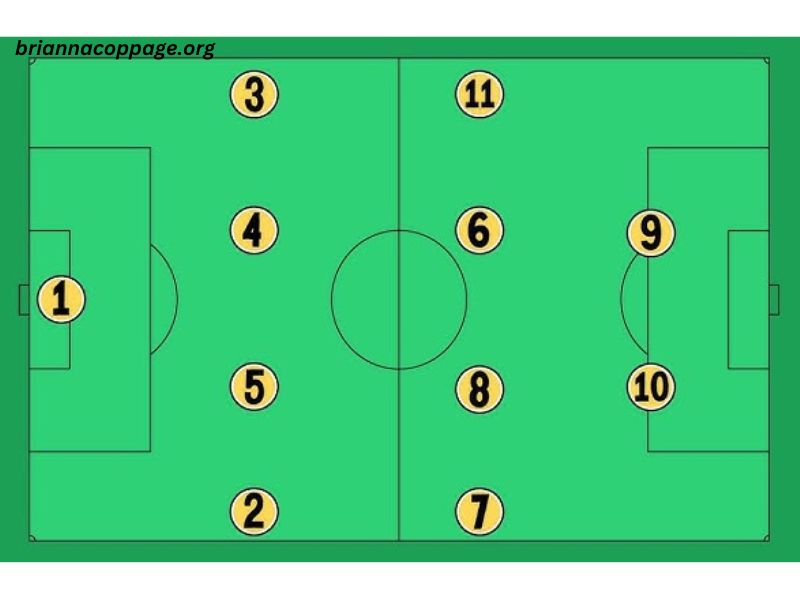Soccer, known as football in most parts of the world, is one of the most popular and widely played sports globally. Played in schools, leagues, and professional levels, the sport has captured the imagination of millions. While soccer’s rules may seem simple on the surface, understanding its structure can help clarify how the game works. One of the most fundamental aspects of the game is the number of players on the field.
In this article, we will explore how many players are typically on a soccer field, both at the professional level and in various other forms of the sport. We will also look at the positions players typically occupy and the reasoning behind the team structure.
Standard Number of Players on a Soccer Field
In a standard professional soccer match, each team consists of 11 players. This is the universally recognized number of players for most competitive adult matches governed by organizations such as FIFA (Fédération Internationale de Football Association).
Thus, the total number of players on the field during a typical 11-a-side soccer game is 22: 11 players from each team. The positions on the field are broken down into various roles, including offensive, defensive, and goalkeeper positions.
The Roles of Players on the Field
Each player on the soccer field has a specific role, depending on their position. Understanding these roles is essential to appreciating how the team dynamic works.
1. Goalkeeper (1 per team)
The goalkeeper, or goalie, is the only player on the field who is allowed to use their hands, but only within the penalty box. Their primary objective is to prevent the opposing team from scoring by blocking or catching the ball.
2. Defenders (3-4 per team)
Defenders are positioned closer to their own goal and are responsible for stopping the opposing team’s forwards and wingers. Defenders usually fall into three categories:
- Center-backs: Located in the center of the defense, they are crucial for protecting the goal from central attacks.
- Full-backs: Positioned on the left and right flanks of the defense, full-backs help stop wingers and are often involved in attacking plays down the wing.
- Wing-backs: In more advanced systems (such as the 3-5-2 formation), wing-backs combine the roles of both full-backs and wingers, running up and down the field on the flanks.
3. Midfielders (3-4 per team)
Midfielders are the central players who link defense and attack. They cover a large portion of the field and are responsible for controlling the game’s tempo, distributing the ball, and supporting both defensive and offensive actions. There are several subtypes of midfielders:
- Central Midfielders: Play in the middle of the field, often dictating the flow of the game.
- Defensive Midfielders: Positioned deeper in the midfield, they are primarily focused on intercepting the ball and protecting the defense.
- Attacking Midfielders: Positioned closer to the forward line, they play a key role in creating scoring opportunities.
- Wide Midfielders/Wingers: Positioned near the sideline, they are typically more focused on delivering crosses into the opponent’s penalty area.
4. Forwards (2-3 per team)
Forwards, or strikers, are positioned closest to the opponent’s goal. Their primary goal is to score goals. In most systems, there are one or two forwards:
- Center Forwards: Positioned centrally, the center forward is the main attacking threat for the team.
- Wingers: Wide forwards who often deliver crosses into the center, where the center-forward or attacking midfielders can capitalize on them.
Formation and Its Impact on the Number of Players
The number of players on the field remains constant at 22, but teams can choose different formations that allocate players into specific positions to create strategic advantages. The most common formations used in professional soccer are:
1. 4-4-2 Formation
This traditional formation consists of 4 defenders, 4 midfielders, and 2 forwards. It’s often used to provide balance between defense and attack, with the two forwards up top being supported by wide midfielders who can push up the flanks.
2. 4-3-3 Formation
In this formation, the team has 4 defenders, 3 midfielders, and 3 forwards. The formation is more attack-oriented, with the 3 forwards providing width and depth in the attack, while the 3 midfielders control the center of the field.
3. 3-5-2 Formation
This formation employs 3 central defenders, 5 midfielders, and 2 forwards. It is more defensive, with wing-backs providing width in attack while still covering for the central defenders.
4. 5-3-2 Formation
Similar to the 3-5-2, but with 5 defenders and 3 midfielders. This is a more defensive formation, commonly used when a team needs to protect a lead.
Each formation balances the number of players in different areas of the field. For example, a team might choose to prioritize a stronger defense with more defenders, or opt for a more aggressive formation with additional forwards.
Variations in Soccer Formats
While the standard 11-a-side soccer game is the most common form of the sport, there are several variations that adjust the number of players on the field to suit different contexts.
1. Futsal
Futsal is a small-sided version of soccer typically played indoors. Teams consist of 5 players (including the goalkeeper) on each side. The smaller field and fewer players lead to a faster, more technical game, where ball control and quick thinking are essential.
2. 7-a-Side Soccer
Another variation is 7-a-side soccer, often played in leagues or recreational settings. This format is common for youth and amateur soccer leagues. It provides a balance between the more expansive 11-a-side game and the rapid pace of futsal. The teams play on smaller fields, and the reduced number of players can make for more frequent scoring opportunities and a faster-paced game.
3. 5-a-Side Soccer
This version of the game is also played with smaller teams and is popular for casual games, often played in gyms or on smaller outdoor fields. Teams consist of 5 players, and the reduced number of players further increases the intensity and speed of the game.
4. Indoor Soccer
Indoor soccer, which may or may not be played on a smaller field, usually involves teams of 6 players (including the goalkeeper). Indoor soccer emphasizes quick passes, agility, and rapid transitions between defense and offense.
Substitutes and Squad Size
While the standard number of players on the field is 22 (11 per team), there are also substitutes who can replace starting players during the game. In most professional leagues, each team is allowed 3 substitutions during regulation time. In some competitions, such as during extra time in knockout stages of tournaments, this number may increase.
The overall squad size varies depending on the competition. For example, in European competitions like the UEFA Champions League, teams can have a squad of up to 25 players. This allows coaches to rotate players, give rest to tired athletes, and account for injuries.
Conclusion
In summary, a standard professional soccer game involves 22 players on the field at any given time, with each team fielding 11 players. These players are assigned specific roles, such as goalkeepers, defenders, midfielders, and forwards, based on the team’s formation and strategic approach to the game. While variations like futsal and 7-a-side soccer reduce the number of players, the essence of the game remains the same: to score more goals than the opposing team.
Soccer is a dynamic sport, and the number of players on the field can vary depending on the format and competition. Whether you’re watching the world’s best compete in an 11-a-side match or playing a fast-paced futsal game with friends, the number of players and their positions are fundamental to how the game is played and enjoyed.






